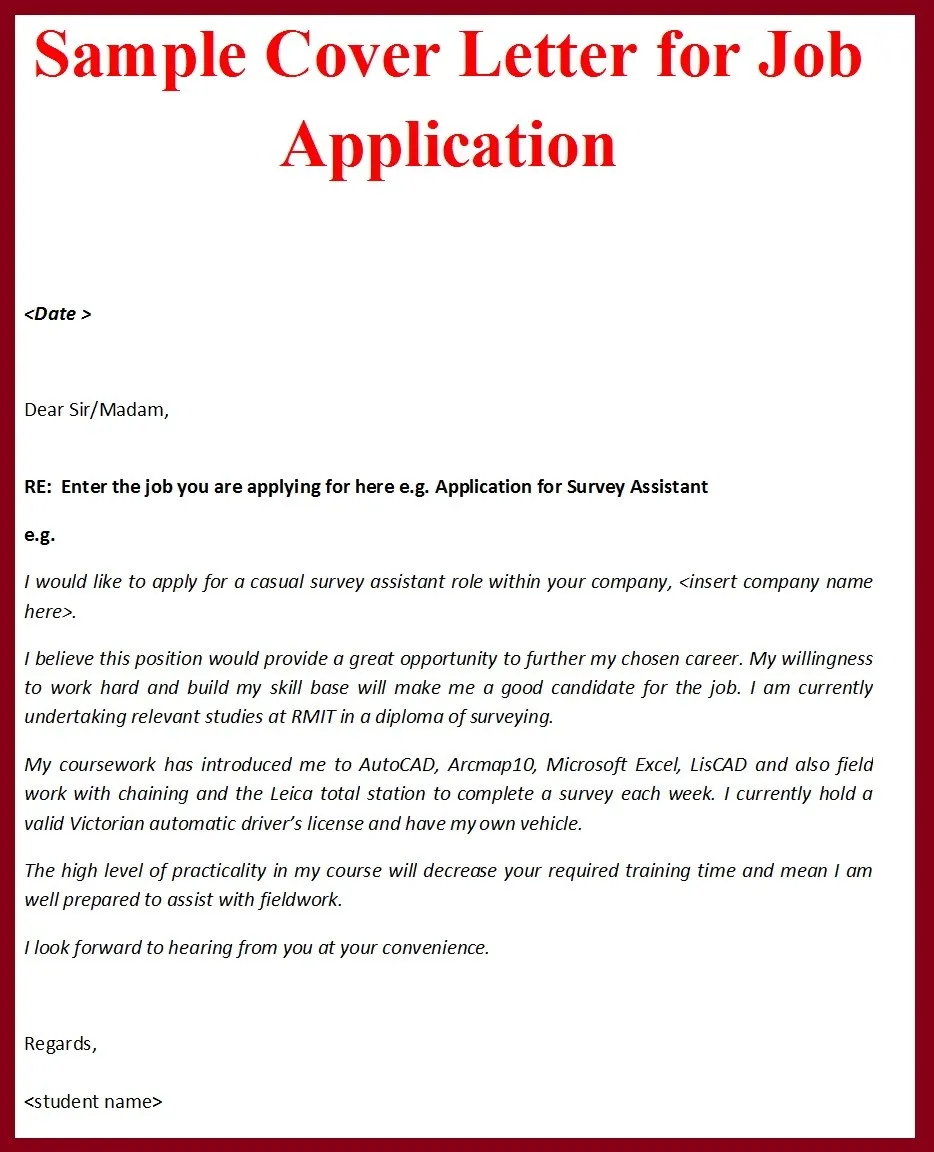What is a Cover Letter?
A cover letter is a crucial document that accompanies your resume when applying for a job. It serves as your introduction to the hiring manager, offering a glimpse into your personality, skills, and experience. Unlike a resume, which provides a factual overview of your qualifications, a cover letter allows you to tell your story and explain why you are the ideal candidate for the position. It’s your chance to make a strong first impression and demonstrate your genuine interest in the opportunity. Think of it as a personal sales pitch, designed to convince the employer to read your resume and consider you for an interview. A well-crafted cover letter can significantly increase your chances of getting noticed and landing your dream job. It is a vital tool for showcasing your unique value proposition and differentiating yourself from other applicants. The cover letter should be unique to each job you apply for.
Why is a Cover Letter Important?
In today’s competitive job market, a cover letter is more important than ever. It is an opportunity to provide context to your resume, highlighting the skills and experiences most relevant to the specific job. Without a cover letter, your application might be overlooked, as it lacks the personal touch and tailored information that employers seek. It demonstrates your communication skills, attention to detail, and genuine interest in the company and role. Many hiring managers use cover letters to screen candidates, looking for those who have taken the time to personalize their application and show a clear understanding of the job requirements. It also allows you to address any potential gaps in your resume or explain career transitions, providing clarity and context that your resume alone cannot offer. By showcasing your personality and enthusiasm, your cover letter can make you stand out from the crowd and make a lasting impression.
Key Components of a Cover Letter

A well-structured cover letter consists of several key components. It starts with your contact information, followed by the hiring manager’s contact information. Next comes a compelling opening that grabs the reader’s attention. The body of the letter should highlight your relevant skills and experiences, matching them to the job requirements. It’s important to quantify your achievements and demonstrate your enthusiasm for the role and the company. Then, you should clearly express your interest in the position. Finish strong with a professional closing. Remember, each section plays a crucial role in conveying your message and making a strong case for your candidacy. Adhering to this structure will help you create a cover letter that is both informative and engaging, increasing your chances of success. These components work together to create a cohesive and persuasive document that effectively markets your skills and qualifications.
Your Contact Information
At the top of your cover letter, provide your full name, phone number, email address, and optionally, your LinkedIn profile URL. Make sure the email address is professional and appropriate for job applications. This information allows the hiring manager to easily reach you. Double-check the accuracy of your contact details to avoid any missed opportunities. Using a clear and consistent format for your contact information enhances readability and professionalism. Place this information at the top left or right corner of the document for easy access. Ensuring your contact information is readily available is essential for a smooth application process and helps potential employers to quickly reach out if they are interested in scheduling an interview.
The Hiring Manager’s Contact Information
If possible, address your cover letter to a specific person – the hiring manager or the recruiter. Researching the company’s website or LinkedIn can help you find the appropriate contact person. Addressing the letter to a specific individual shows that you’ve taken the time to personalize your application. If you cannot find a specific name, use a professional greeting such as “Dear Hiring Manager.” Include the hiring manager’s name, title, company name, and address. This demonstrates attention to detail and professionalism. It’s also a way to show your genuine interest in the role and company. If you cannot find the name, use “Dear Hiring Manager,” but always try to find a name as it makes your application more personable and demonstrates your commitment.
A Compelling Opening
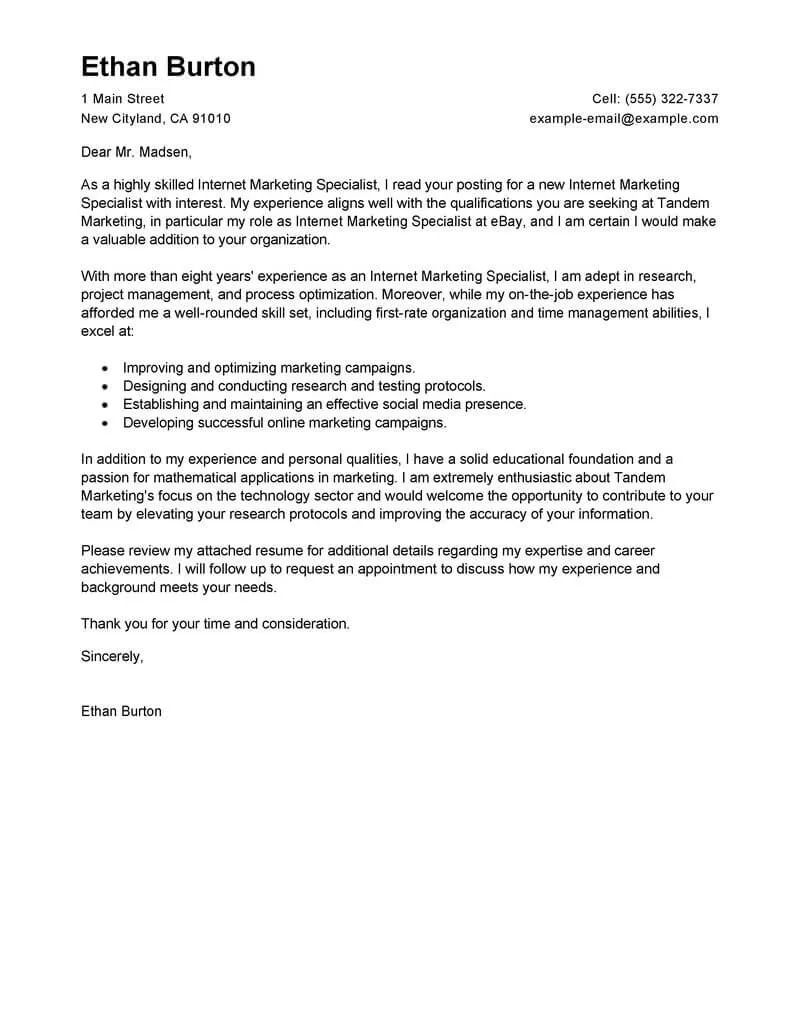
The opening paragraph is your first opportunity to grab the reader’s attention. Start with a strong hook that immediately highlights your interest in the position and the company. Briefly mention the position you are applying for and where you found the job posting. You might also mention a mutual connection or something specific that excites you about the opportunity. Avoid generic openings like “I am writing to express my interest.” Instead, try to show enthusiasm and a clear understanding of the company’s needs. The first sentence should capture the reader’s interest and make them want to read more. A well-crafted opening sets the tone for the entire cover letter, making a lasting impression. It should be concise, engaging, and directly relevant to the job you’re applying for. Make sure your opening is memorable and reflects your unique skills.
Highlighting Your Skills and Experiences
The body of your cover letter is where you showcase your relevant skills and experiences. Focus on the qualifications most closely aligned with the job requirements. Use specific examples from your previous roles or projects to demonstrate how you have successfully applied these skills. Avoid simply listing your responsibilities; instead, highlight your achievements and the impact you made in previous roles. Quantify your achievements whenever possible, using numbers and data to show the results you delivered. Tailor your examples to the specific needs of the employer, demonstrating that you understand their challenges and can offer solutions. Use action verbs to describe your accomplishments, making your letter more dynamic and engaging. This section is your opportunity to connect your past experiences to the future role, showcasing why you’re the best fit.
Matching Skills to Job Requirements
Carefully review the job description and identify the key skills and qualifications the employer is seeking. Then, in your cover letter, explicitly connect your skills and experiences to these requirements. Use the same keywords and phrases from the job description to make it easy for the hiring manager to see the alignment between your qualifications and the needs of the role. Provide specific examples of how you have used these skills in the past and what results you achieved. If the job requires a particular software or technical skill, highlight your proficiency and experience with it. By directly addressing the job requirements, you demonstrate that you have taken the time to understand the role and are a strong match for the position. This targeted approach increases your chances of getting noticed and advancing to the next stage of the hiring process.
Quantifying Your Achievements
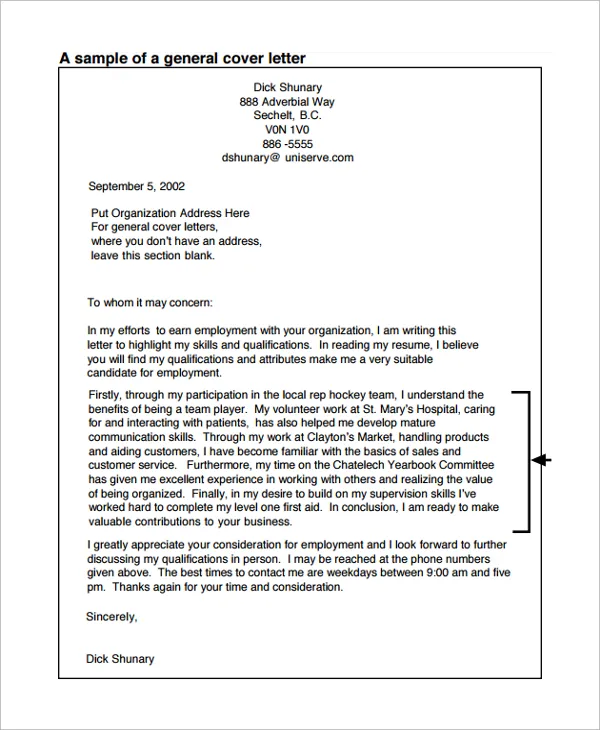
Whenever possible, quantify your achievements to demonstrate the impact you have made in previous roles. Use numbers, percentages, and data to support your claims. For example, instead of saying “Increased sales,” say “Increased sales by 20% in one quarter.” Instead of saying “Managed a team,” say “Managed a team of 10 employees, achieving a 15% increase in productivity.” Quantifying your achievements provides concrete evidence of your abilities and makes your cover letter more persuasive. This also helps the hiring manager to understand the value you bring to the table. By providing measurable results, you show that you are results-oriented and can deliver tangible outcomes. Data-driven accomplishments make your cover letter more impactful and memorable, setting you apart from other applicants.
Demonstrating Your Enthusiasm
Show genuine enthusiasm for the role and the company throughout your cover letter. Expressing your excitement helps you to connect with the hiring manager and makes your application more memorable. Mention something specific that excites you about the opportunity, such as the company’s mission, values, or recent projects. Research the company and mention something that resonates with you, such as a product, service, or initiative. Enthusiasm is contagious and can make a positive impression on the hiring manager. Demonstrate your passion by using energetic language and conveying a positive attitude. Show that you are not just looking for a job, but that you are truly interested in contributing to the company’s success. Conveying your enthusiasm sets you apart from other candidates and strengthens your overall application.
Expressing Your Interest in the Role
Clearly state your interest in the specific role and why you are a good fit. Explain what attracts you to the position and how your skills and experiences align with the job requirements. Avoid generic statements, and instead, tailor your comments to the specific job and company. Briefly mention your career goals and how this role aligns with them. Express your desire to contribute to the company’s success and your willingness to learn and grow in the role. Make it clear that you are not just applying for any job but are genuinely interested in this specific opportunity. By expressing your interest, you reinforce your commitment and motivation. Show that you have thought about the role and can articulate how your skills fit into the company’s needs.
A Strong Closing
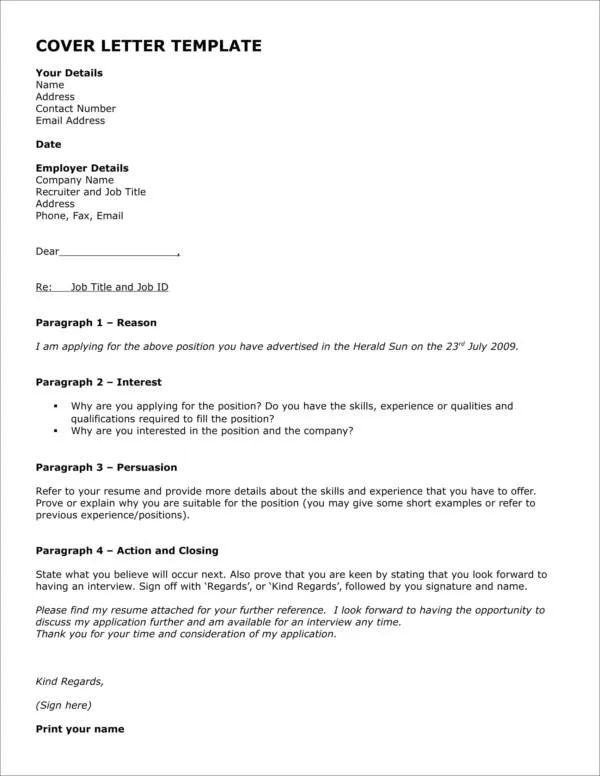
End your cover letter with a strong closing that reiterates your interest and encourages the hiring manager to take action. Thank the hiring manager for their time and consideration. Reiterate your enthusiasm for the role and the company. Clearly state your availability for an interview and how the hiring manager can contact you. Use a professional closing, such as “Sincerely,” “Best regards,” or “Thank you.” Proofread your closing to ensure it is free of errors. A well-crafted closing leaves a positive lasting impression and encourages the hiring manager to move forward with your application. A strong closing reinforces your message and leaves the hiring manager with a clear call to action, increasing your chances of getting an interview.
Proofreading and Formatting Tips
Proofreading and formatting are crucial for making a professional impression. Errors and poor formatting can undermine your application. Make sure your cover letter is polished and easy to read. Proofreading ensures that your letter is free of errors. Proper formatting makes the content accessible to the reader. Attention to detail in this area demonstrates your professionalism and your commitment to the role. Ensuring a polished document shows the hiring manager that you are detail-oriented and that you are willing to go the extra mile. This section provides practical advice to ensure that your cover letter stands out for all the right reasons.
Proofreading for Errors
Thoroughly proofread your cover letter for any spelling, grammar, or punctuation errors. These mistakes can create a negative impression and may lead to your application being rejected. Use a spell checker and grammar checker, but don’t rely on them completely; always read the letter yourself. Read your cover letter aloud, which can help you catch errors you might miss when reading silently. Ask a friend, family member, or career counselor to proofread your letter as a second set of eyes can catch errors you may have missed. Ensure consistency in formatting, such as spacing and font usage. Proofreading shows attention to detail and professionalism. Make sure every sentence is clear, concise, and accurately conveys your message. Proofreading is essential, as errors can significantly damage your credibility.
Choosing the Right Font and Format

Choose a professional and easy-to-read font, such as Arial, Calibri, or Times New Roman. Keep the font size between 10 and 12 points for optimal readability. Use a standard format with consistent margins and spacing. Avoid using overly creative or distracting fonts, as they can detract from your message. Use appropriate headings and bullet points to break up large blocks of text and make your letter easier to scan. Save your cover letter as a PDF file to preserve the formatting and ensure it appears correctly on any device. Using a clear and consistent format demonstrates professionalism and makes your letter more appealing to the reader. A well-formatted cover letter is visually appealing, helping the hiring manager quickly grasp your key qualifications.
Tailoring Your Cover Letter
Tailoring your cover letter is essential for demonstrating your interest in the specific role and company. Generic cover letters often get overlooked, so customization is key. Customize your cover letter to match each job application. Start by reviewing the job description carefully, paying attention to the required skills, experiences, and qualifications. Use keywords and phrases from the job description in your cover letter, as this helps the hiring manager quickly identify the match between your qualifications and the role’s requirements. Tailor your examples to the specific needs of the employer, showing how your experiences relate to the company’s challenges and objectives. Researching the company and the role, then tailoring your cover letter accordingly, will significantly increase your chances of getting noticed. The more personalized the letter is, the more likely the hiring manager is to recognize your genuine interest.
Researching the Company and Role
Before you start writing your cover letter, research the company and the role you are applying for. Visit the company’s website to learn about its mission, values, products, and services. Review the job description carefully to understand the specific requirements and responsibilities of the role. Use LinkedIn to learn more about the hiring manager and other employees. Research industry trends and challenges, as this can help you tailor your letter and demonstrate your understanding of the company’s context. Mentioning specific company projects, values, or recent news items shows that you have taken the time to learn about the company. This level of detail demonstrates genuine interest and allows you to make a more compelling case for your candidacy. Your research will enable you to write a customized cover letter that showcases your understanding of the company’s needs.
Personalizing Your Letter
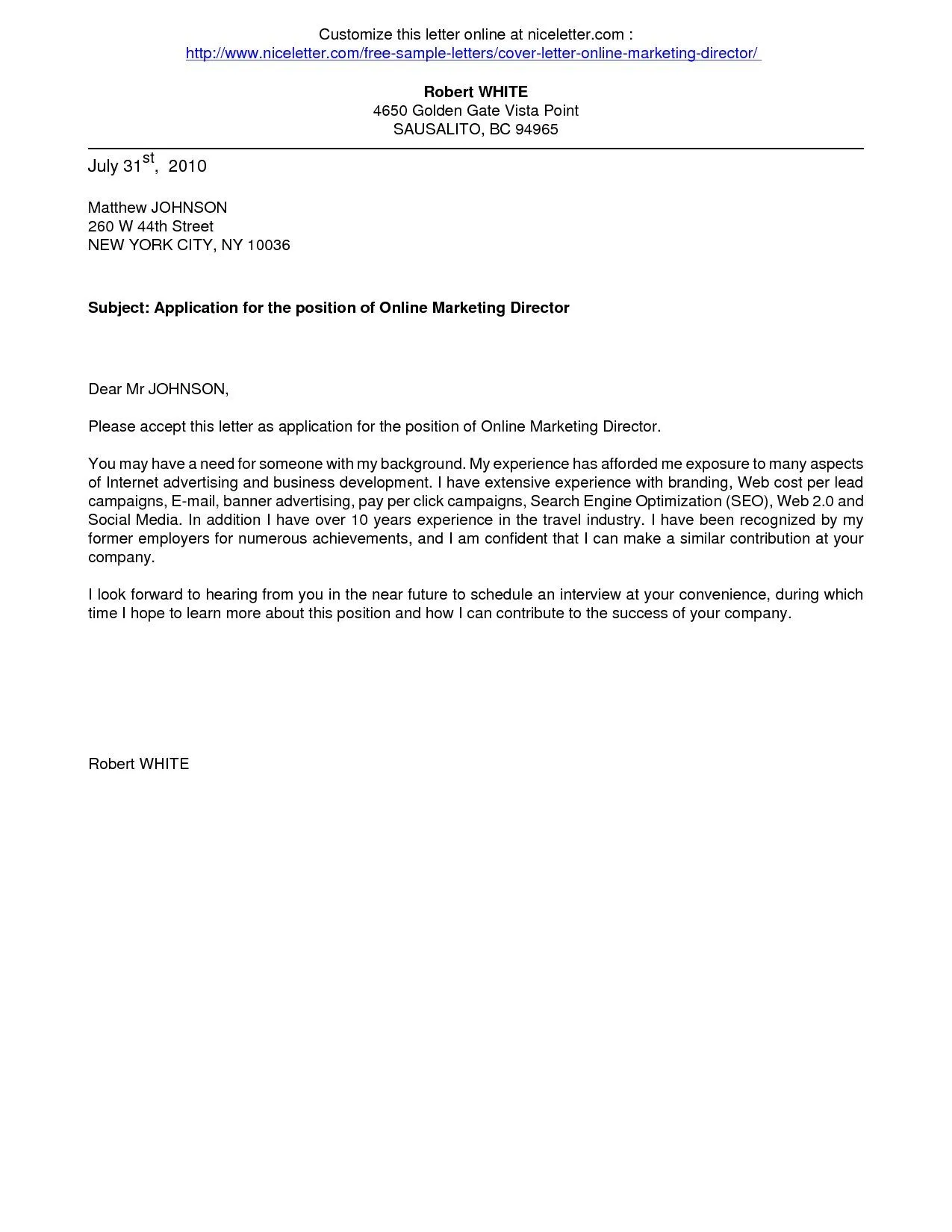
Personalize your cover letter to stand out from the competition and highlight your unique qualities. Address the hiring manager by name if possible. Tailor your opening to reflect your understanding of the role and the company’s needs. Provide specific examples that illustrate how your skills and experiences align with the job requirements. Show enthusiasm for the role and express a clear understanding of the company’s goals. Demonstrate your personality and let your genuine voice come through. Use anecdotes or stories to illustrate your skills and accomplishments, making your letter more engaging and memorable. By personalizing your letter, you demonstrate your genuine interest and show that you are more than just a generic applicant, increasing your chances of getting the interview. This customized approach proves that you have put in the effort to present yourself in the best light.
Cover Letter Examples
Reviewing cover letter examples can provide valuable insights and inspiration for writing your own. Look for examples that are relevant to your industry, experience level, and the specific job you are applying for. Many online resources offer templates and examples that can guide you through the process of crafting your cover letter. Analyze the structure, content, and tone of the examples to learn how to effectively highlight your skills and qualifications. Pay attention to how the examples are tailored to the specific job and the company’s needs. Adapt the examples to reflect your own experience and qualifications, ensuring that your cover letter is unique and personal. These examples are useful guidelines to help you understand best practices and optimize your cover letter to get the best results. Use these to help you avoid common mistakes and to make your cover letter more impactful.
Cover Letter for Entry-Level Positions
For entry-level positions, emphasize your education, relevant coursework, internships, volunteer experiences, and transferable skills. If you have limited professional experience, highlight your academic achievements, projects, and any leadership roles you held in school. Show enthusiasm for the opportunity and demonstrate your willingness to learn and grow. Focus on the skills and experiences you have gained in any previous roles, no matter how small, making it relevant to the job. Use the cover letter to explain why you are interested in the company and the role, and how your skills align with the job requirements. Be sure to highlight your soft skills, such as communication, teamwork, and problem-solving abilities. Tailor your letter to demonstrate your potential to succeed in the role and your eagerness to start your career.
Cover Letter for Experienced Professionals
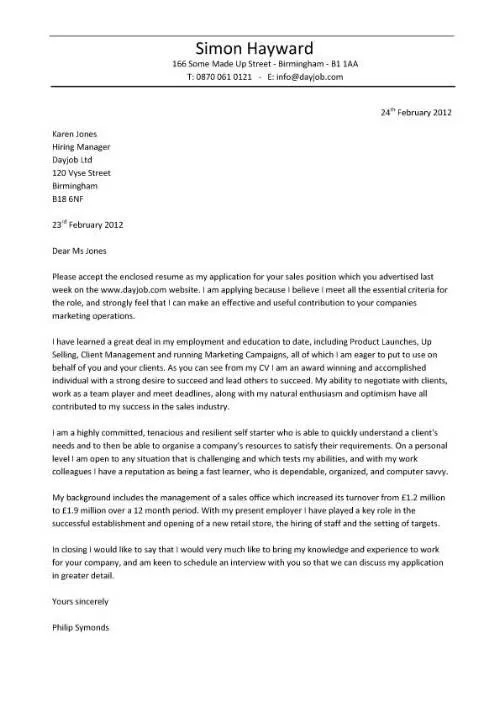
For experienced professionals, focus on your accomplishments and the impact you have made in previous roles. Quantify your achievements whenever possible, using data and metrics to demonstrate your success. Highlight your relevant skills and experiences, matching them to the specific requirements of the job. Demonstrate your leadership abilities and your ability to manage teams and projects. Show how you have consistently exceeded expectations and delivered results. Use your cover letter to illustrate your expertise, professional skills, and the value you bring to the company. Provide clear examples of your past successes. Tailor your cover letter to the particular role and industry. Show that you have the skills, experience, and expertise the company needs, making your candidacy stand out.
Cover Letter for Career Changers
If you are changing careers, address the gap between your previous experience and the new role. Highlight the transferable skills you have gained in previous roles, demonstrating how they can be applied to the new position. Explain your reasons for the career change and express your enthusiasm for the new field. Research the industry and the role to understand the requirements and expectations. Tailor your cover letter to show that you are committed to your new career path and that you have the necessary skills and qualifications. Focus on how your transferable skills and experiences will benefit the company. Show that you have thought critically about your career goals and how this role will assist you in achieving them. Your cover letter is a great opportunity to showcase why your skills and experiences are useful for the new role and that you are enthusiastic.
Final Thoughts
Writing a compelling cover letter is a crucial step in your job search. By following these guidelines, you can create a cover letter that highlights your skills, experience, and enthusiasm, increasing your chances of getting noticed by hiring managers. Remember to tailor your letter to each job application, proofread carefully, and use a professional format. A well-crafted cover letter can make a significant difference in your job search, helping you to stand out from the competition and secure your desired role. By investing time and effort into your cover letter, you are investing in your future success. Focus on showcasing your value, highlighting your key strengths, and demonstrating your unique qualities. Your cover letter is a very important tool and the first step towards your goal.
